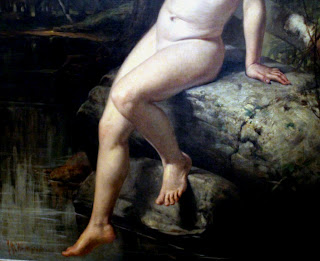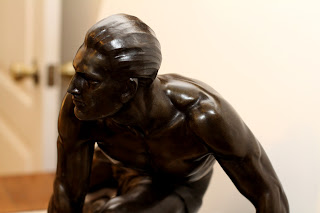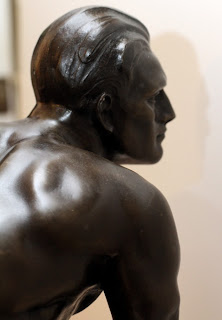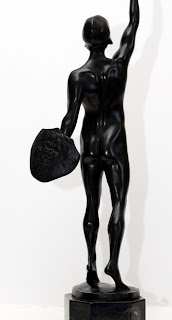----------------------------------------------
While doing some research on Whittaker this morning, I discovered that this particular painting was part of the Collection of Dr. Clark S. Marlor, Professor Adelphi University and was sold at auction by Christies in 1995. Marlor, from my research, was the author of "A History of the Brooklyn Art Association" (1970) and penned a Biography of John B. Whittaker under that title. I bought this painting at auction several years ago. I did not pay much attention to the measurements on the auction site and got the shock of my life when I had to make arrangements to have it shipped. I had placed what I thought was a fair bid and literally forgot about it until the email arrived advising me that I had taken the auction. It arrived in a sixteen wheeler and took me an hour to unpack. Next time I buy something this large, it measures 42 inches by 62 inches with the frame and takes up one wall all to itself, I promise to pay more attention to the size listed in the description before jumping off the bridge. Truly a nice example of Whittaker's painting talents.
--------------------------------------
Bathing Boys as subject matter in Art
--------------------------------------
I have previously mentioned in past posts the use of the nude boy, nude youth, or nude ephebe in art and this is a prime example of the phenomenon of "Bathing Boys" as subject matter and symbol in art. I think I will go back into my image files and pull out some additional examples of this popular subject matter. I think you will be astounded at the vast quantity of paintings, drawings, and prints featuring the nude boy swimming, playing, and bathing. If I can find my copy of Germaine Greer's book... The Beautiful Boy, I'll do some research and see if we can make some sense out of why boys play such a prominent role in artistic studies, especially in the late 19th century. I have seen volumes on "The Female Nude" but for the life of me I don't think I have ever seen a serious academic work on the nude girl. We will explore this further in later posts.
----------------------------------------






























































